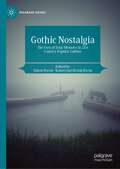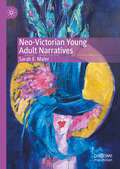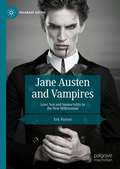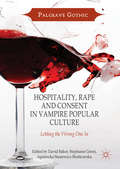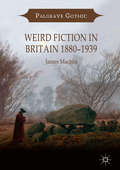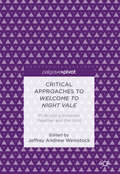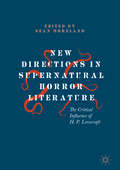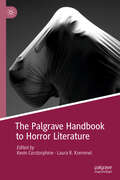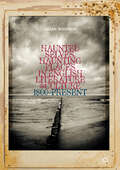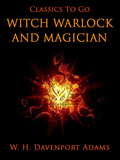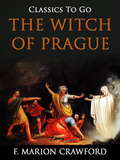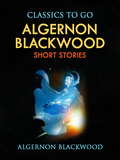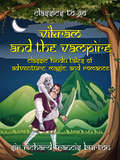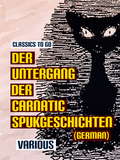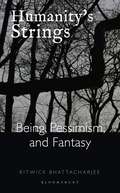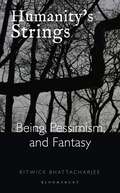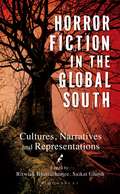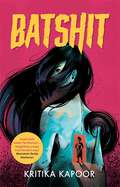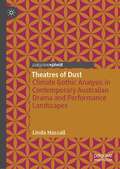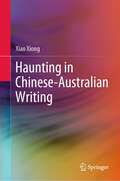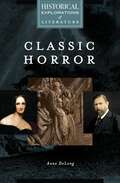- Table View
- List View
Gothic Nostalgia: The Uses of Toxic Memory in 21st Century Popular Culture (Palgrave Gothic)
by Simon Bacon Katarzyna Bronk-BaconThis book is an original and innovative study of how Gothic nostalgia and toxic memory are used to underpin and promote the ongoing culture wars and populist politics in contemporary popular culture. The essays collected here cover topics from the spectral to the ecological, deep fakes to toxic ableism, Mary Poppins to John Wick to reveal how the use of an imaginary past to shape the present, creates truly Gothic times that we can never escape. These ‘hungry ghosts’ from the past find resonance with the Gothic which speaks equally of a past that often not only haunts the present but will not let it escape its grasp. This collection will look at the confluence between various kinds of toxic nostalgia and popular culture to suggest the ways in which contemporary populism has resurrected ideological monsters from the grave to gorge on the present and any possibility of change that the future might represent.
Neo-Victorian Young Adult Narratives
by Sarah E. MaierNeo-Victorian Young Adult Narratives examines the neo-Victorian themes and motifs currently appearing in young adult fiction—specifically addressing the themes of authorship, sexuality, and criminality in the context of the Victorian age in British and American cultures. This book explicates the complicated relationship between the Victorian past and the turn to Victorian modes of thought on literature, history, and morality. Additionally, Sarah E. Maier aims to determine if the appeal of neo-Victorian young adult fiction rests in or resists nostalgia, parody, and revision. Given the overwhelming prevalence of the Victorian in the young adult genres of biofiction, juvenile writings, gothic, sensation, mystery, and crime fiction, there is much to investigate in terms of the friction between the past and the present.
Jane Austen and Vampires: Love, Sex and Immortality in the New Millennium (Palgrave Gothic)
by Eric ParisotJane Austen and Vampires is the first book to investigate the literary convergence of Jane Austen and vampires in Austen fanfic after the success of Stephenie Meyer’s Twilight (2005) and Seth Grahame-Smith’s Pride and Prejudice and Zombies (2009). It asks how the shifting cultural values of Austen and the vampire have aligned, and what their connection might mean for their respective contemporary legacies. It also makes a case for reading “low brow” Austen fanfic attentively, as a way to gain meaningful insight directly from Austen fans into the tensions and anxieties surrounding contemporary notions of love, sex, femininity, and Austen’s modern currency. Offering close readings of Austen’s vampire-slaying heroines, vampiric retellings of Pride and Prejudice, and the transformation of Austen herself into a vampire, this book reveals Austen-vampire mashups as messy, complex entanglements that creatively and self-reflexively interrogate modern fantasies of vampire romance. By its unique intersection of Jane Austen with the vampire, the Gothic, fan culture and popular romance, Jane Austen and Vampires adds a new chapter to the history of Austen’s reception, for fans, students and scholars alike.
Hospitality, Rape and Consent in Vampire Popular Culture
by David Baker Stephanie Green Agnieszka Stasiewicz-BieńkowskaThis unique study explores the vampire as host and guest, captor and hostage: a perfect lover and force of seductive predation. From Dracula and Carmilla, to True Blood and The Originals, the figure of the vampire embodies taboos and desires about hospitality, rape and consent. The first section welcomes the reader into ominous spaces of home, examining the vampire through concepts of hospitality and power, the metaphor of threshold, and the blurred boundaries between visitation, invasion and confinement. Section two reflects upon the historical development of vampire narratives and the monster as oppressed, alienated Other. Section three discusses cultural anxieties of youth, (im)maturity, childhood agency, abuse and the age of consent. The final section addresses vampire as intimate partner, mapping boundaries between invitation, passion and coercion. With its fresh insight into vampire genre, this book will appeal to academics, students and general public alike.
Weird Fiction in Britain 1880–1939 (Palgrave Gothic)
by James MachinThis book is the first study of how ‘weird fiction’ emerged from Victorian supernatural literature, abandoning the more conventional Gothic horrors of the past for the contemporary weird tale. It investigates the careers and fiction of a range of the British writers who inspired H. P. Lovecraft, such as Arthur Machen, M. P. Shiel, and John Buchan, to shed light on the tensions between ‘literary’ and ‘genre’ fiction that continue to this day. Weird Fiction in Britain 1880–1939 focuses on the key literary and cultural contexts of weird fiction of the period, including Decadence, paganism, and the occult, and discusses how these later impacted on the seminal American pulp magazine Weird Tales. This ground-breaking book will appeal to scholars of weird, horror and Gothic fiction, genre studies, Decadence, popular fiction, the occult, and Fin-de-Siècle cultural history.
Weird Fiction in Britain 1880–1939 (Palgrave Gothic)
by James MachinThis book is the first study of how ‘weird fiction’ emerged from Victorian supernatural literature, abandoning the more conventional Gothic horrors of the past for the contemporary weird tale. It investigates the careers and fiction of a range of the British writers who inspired H. P. Lovecraft, such as Arthur Machen, M. P. Shiel, and John Buchan, to shed light on the tensions between ‘literary’ and ‘genre’ fiction that continue to this day. Weird Fiction in Britain 1880–1939 focuses on the key literary and cultural contexts of weird fiction of the period, including Decadence, paganism, and the occult, and discusses how these later impacted on the seminal American pulp magazine Weird Tales. This ground-breaking book will appeal to scholars of weird, horror and Gothic fiction, genre studies, Decadence, popular fiction, the occult, and Fin-de-Siècle cultural history.
Critical Approaches to Welcome to Night Vale: Podcasting between Weather and the Void
by Jeffrey Andrew WeinstockWith well over one-hundred episodes, the podcast Welcome to Night Vale has spawned several international live tours, two novels set in the Night Vale universe, and an extensive volume of fan fiction and commentary. However, despite its immense popularity, Welcome to Night Vale has received almost no academic scrutiny. This edited collection of scholarly essays—the very first of its kind on a podcast—attempts to redress this lack of attention to Night Vale by bringing together an international group of scholars from different disciplines to consider the program’s form, themes, politics, and fanbase. After a thorough introduction by the volume’s editor, Jeffrey Andrew Weinstock, the eight contributors not only offer close analysis of Night Vale, but use the program as the impetus for broader explorations of new media, gender, the constitution of identity, the construction of place, and the human relationship to meaning and the non-human.
Critical Approaches to Welcome to Night Vale: Podcasting between Weather and the Void
by Jeffrey Andrew WeinstockWith well over one-hundred episodes, the podcast Welcome to Night Vale has spawned several international live tours, two novels set in the Night Vale universe, and an extensive volume of fan fiction and commentary. However, despite its immense popularity, Welcome to Night Vale has received almost no academic scrutiny. This edited collection of scholarly essays—the very first of its kind on a podcast—attempts to redress this lack of attention to Night Vale by bringing together an international group of scholars from different disciplines to consider the program’s form, themes, politics, and fanbase. After a thorough introduction by the volume’s editor, Jeffrey Andrew Weinstock, the eight contributors not only offer close analysis of Night Vale, but use the program as the impetus for broader explorations of new media, gender, the constitution of identity, the construction of place, and the human relationship to meaning and the non-human.
New Directions in Supernatural Horror Literature: The Critical Influence of H. P. Lovecraft
by Sean MorelandThis collection of essays examines the legacy of H.P. Lovecraft’s most important critical work, Supernatural Horror in Literature. Each chapter illuminates a crucial aspect of Lovecraft’s criticism, from its aesthetic, philosophical and literary sources, to its psychobiological underpinnings, to its pervasive influence on the conception and course of horror and weird literature through the twentieth and early twenty-first centuries. These essays investigate the meaning of cosmic horror before and after Lovecraft, explore his critical relevance to contemporary social science, feminist and queer readings of his work, and ultimately reveal Lovecraft’s importance for contemporary speculative philosophy, film and literature.
New Directions in Supernatural Horror Literature: The Critical Influence of H. P. Lovecraft
by Sean MorelandThis collection of essays examines the legacy of H.P. Lovecraft’s most important critical work, Supernatural Horror in Literature. Each chapter illuminates a crucial aspect of Lovecraft’s criticism, from its aesthetic, philosophical and literary sources, to its psychobiological underpinnings, to its pervasive influence on the conception and course of horror and weird literature through the twentieth and early twenty-first centuries. These essays investigate the meaning of cosmic horror before and after Lovecraft, explore his critical relevance to contemporary social science, feminist and queer readings of his work, and ultimately reveal Lovecraft’s importance for contemporary speculative philosophy, film and literature.
The Palgrave Handbook to Horror Literature
by Kevin Corstorphine Laura R. KremmelThis handbook examines the use of horror in storytelling, from oral traditions through folklore and fairy tales to contemporary horror fiction. Divided into sections that explore the origins and evolution of horror fiction, the recurrent themes that can be seen in horror, and ways of understanding horror through literary and cultural theory, the text analyses why horror is so compelling, and how we should interpret its presence in literature. Chapters explore historical horror aspects including ancient mythology, medieval writing, drama, chapbooks, the Gothic novel, and literary Modernism and trace themes such as vampires, children and animals in horror, deep dark forests, labyrinths, disability, and imperialism. Considering horror via postmodern theory, evolutionary psychology, postcolonial theory, and New Materialism, this handbook investigates issues of gender and sexuality, race, censorship and morality, environmental studies, and literary versus popular fiction.
Haunted Selves, Haunting Places in English Literature and Culture: 1800–Present
by Julian WolfreysHaunted Selves, Haunting Places in English Literature and Culture offers a series of readings of poetry, the novel and other forms of art and cultural expression, to explore the relationship between subject and landscape, self and place. Utilizing an interdisciplinary approach grounded in close reading, the text places Jacques Derrida’s work on spectrality in dialogue with particular aspects of phenomenology. The volume explores writing and culture from the 1880s to the present day, proceeding through four sections examining related questions of identity, memory, the landscape, and our modern relationship to the past. Julian Wolfreys presents a theoretically informed understanding of the efficacy of literature and culture in connecting us to the past in an affective and engaged manner.
Witch, Warlock, and Magician: Historical Sketches Of Magic And Witchcraft In England And Scotland (Classics To Go)
by W. H. Davenport AdamsIt was not the author's purpose in this volume to attempt a general history of magic and alchemy, or a scientific inquiry into their psychological aspects. He confined himself to a sketch of their progress in England and to a narrative of the lives of our principal magicians. It is also devoted to a historical review of witchcraft in Great Britain, and an examination into the most remarkable witch trials. (Excerpt from Goodreads)
The Witch of Prague: A Fantastic Tale (Classics To Go)
by F. Marion CrawfordExcerpt: "A great multitude of people filled the church, crowded together in the old black pews, standing closely thronged in the nave and aisles, pressing shoulder to shoulder even in the two chapels on the right and left of the apse, a vast gathering of pale men and women whose eyes were sad and in whose faces was written the history of their nation. The mighty shafts and pilasters of the Gothic edifice rose like the stems of giant trees in a primeval forest from a dusky undergrowth, spreading out and uniting their stony branches far above in the upper gloom. From the clerestory windows of the nave an uncertain light descended halfway to the depths and seemed to float upon the darkness below as oil upon the water of a well. Over the western entrance the huge fantastic organ bristled with blackened pipes and dusty gilded ornaments of colossal size, like some enormous kingly crown long forgotten in the lumber room of the universe, tarnished and overlaid with the dust of ages. Eastwards, before the rail which separated the high altar from the people, wax torches, so thick that a man might not span one of them with both his hands, were set up at irregular intervals, some taller, some shorter, burning with steady, golden flames, each one surrounded with heavy funeral wreaths, and each having a tablet below it, whereon were set forth in the Bohemian idiom, the names, titles, and qualities of him or her in whose memory it was lighted. Innumerable lamps and tapers before the side altars and under the strange canopied shrines at the bases of the pillars, struggled ineffectually with the gloom, shedding but a few sickly yellow rays upon the pallid faces of the persons nearest to their light."
Short Stories: A Volume Of Nature Stories (Classics To Go)
by Algernon BlackwoodThis collection includes eight of the best stories from Algernon Blackwood. The Wendigo, The Damned, The Man, Schooldays, Julius LeVallon, Edinburgh, The Châlet in the Jura Mountains, The Attempted Restitution. S. T. Joshi has stated that "his work is more consistently meritorious than any weird writer's except Dunsany's" and that his short story collection Incredible Adventures "may be the premier weird collection of this or any other century".
Vikram and the Vampire Classic Hindu Tales of Adventure, Magic, and Romance: Classic Hindu Tales Of Adventure, Magic, And Romance (Classics To Go)
by Richard Francis BurtonVikram and the Vampire, translated and adapted by Sir Richard Burton, is a group of tales told by a baital (not really a vampire but a kind of spirit who can inhabit dead bodies) to King Vikram (described by Burton as the King Arthur of India). The stories are somewhat in the style of the tales of the Arabian Nights. (Goodreads)
Der Untergang der Carnatic Spukgeschichten (Classics To Go)
by VariousSpukgeschichten von Gebrüder Grimm, Wilhelm Hauff, Friedrich Gerstäcker, Paul Heyse, A. J. Mordtmann, Heinrich Zschokkke
Hijas del horror : Rocío Silva Santisteban y Regina José Galindo : mujer, testimonio y violencia en la poesía y la performance
by Bethsabé Huamán AndíaHumanity's Strings: Being, Pessimism, and Fantasy
by Ritwick BhattacharjeeHumanity's Strings: Being, Pessimism, and Fantasy interrogates the nature of reality against fantasy as the two are presented to and created by the human consciousness-a consciousness that is in constant struggle with the omnipresence of misery and the inevitability of death. The book shows that being, pessimism, and fantasy as the strings which are made up of forces unseen, unknown, and ungoverned that control the human being like a puppet. Through a study of the metaphysical and existential philosophies of thinkers, such as Franz Brentano, Edmund Husserl, Søren Kierkegaard, Arthur Schopenhauer, Friedrich Nietzsche, and Jacques Derrida, the book interrogates not only how the self interacts with fantasy but why it does as well. It also asks why fantasy forces the self towards a unity that impacts existence in the modern world with its questions of justice, politics, and materiality. Furthermore, it situates the fantasy novels of authors, such as Stephen King, Brandon Sanderson, Douglas Adams, and Robert Jordan, as discourses which delineate the considerations above as ideas which modulate the existence of the human. Additionally, the book shows how it is not just the human that is affected by the machinations of the cosmos but also time and space-ostensibly a priori entities of existence-as these two interact with the human and its consciousness.
Humanity's Strings: Being, Pessimism, and Fantasy
by Ritwick BhattacharjeeHumanity's Strings: Being, Pessimism, and Fantasy interrogates the nature of reality against fantasy as the two are presented to and created by the human consciousness-a consciousness that is in constant struggle with the omnipresence of misery and the inevitability of death. The book shows that being, pessimism, and fantasy as the strings which are made up of forces unseen, unknown, and ungoverned that control the human being like a puppet. Through a study of the metaphysical and existential philosophies of thinkers, such as Franz Brentano, Edmund Husserl, Søren Kierkegaard, Arthur Schopenhauer, Friedrich Nietzsche, and Jacques Derrida, the book interrogates not only how the self interacts with fantasy but why it does as well. It also asks why fantasy forces the self towards a unity that impacts existence in the modern world with its questions of justice, politics, and materiality. Furthermore, it situates the fantasy novels of authors, such as Stephen King, Brandon Sanderson, Douglas Adams, and Robert Jordan, as discourses which delineate the considerations above as ideas which modulate the existence of the human. Additionally, the book shows how it is not just the human that is affected by the machinations of the cosmos but also time and space-ostensibly a priori entities of existence-as these two interact with the human and its consciousness.
Horror Fiction in the Global South: Cultures, Narratives and Representations
by NoneHorror Fiction in the Global South: Cultures, Narratives, and Representations believes that the experiences of horror are not just individual but also/simultaneously cultural. Within this understanding, literary productions become rather potent sites for the relation of such experiences both on the individual and the cultural front. It's not coincidental, then, that either William Blatty's The Exorcist or Gabriel Garcia Marquez's One Hundred Years of Solitude become archetypes of the re-presentations of the way horror affects individuals placed inside different cultures. Such an affectation, though, is but a beginning of the ways in which the supernatural interacts with the human and gives rise to horror. Considering that almost all aspects of what we now designate as the Global North, and its concomitant, the Global South – political, historical, social, economic, cultural, and so on – function as different paradigms, the experiences of horror and their telling in stories become functionally different as well. Added to this are the variations that one nation or culture of the east has from another. The present anthology of essays, in such a scheme of things, seeks to examine and demonstrate these cultural differences embedded in the impact that figures of horror and specters of the night have on the narrative imagination of storytellers from the Global South. If horror has an everyday presence in the phenomenal reality that Southern cultures subscribe to, it demands alternative phenomenology. The anthology allows scholars and connoisseurs of Horror to explore theoretical possibilities that may help address precisely such a need.
Batshit
by Kritika KapoorTwenty-something Pia Bhandari has the ideal life – or so it seems. As long as she puts on a happy face, no one is any the wiser about the sinister voices in her head. Not her boyfriend Raghav, or her soon-to-be-married younger sister Khushi, her long-time psychiatrist Dr Agarwal, her father Ajit or even her mother Neeta, who is otherwise obsessed with controlling her daughter’s life.But Pia’s demons follow her wherever she goes. One yellow-eyed demon in particular. Feral and bloodthirsty, it threatens to rip through Pia’s life, leaving a murderous trail in its wake. Hurtling between the opulent kothis of GK-2 to the plush bungalows of Sainik Farms, this twisted tale about a Delhi girl’s fight against the dark forces is about to get batshit.
Theatres of Dust: Climate Gothic Analysis in Contemporary Australian Drama and Performance Landscapes
by Linda HassallThrough a contemporary Gothic lens, the book explores theatre theories, processes and practices that explore; the impacts of continuing drought and natural disaster, the conflicts concerning resource extraction and mining and current political debates focussed on climate change denial. While these issues can be argued from various political and economic platforms, theatrical investigations as discussed here suggest that scholars and theatre makers are becoming empowered to dramaturgically explore the ecological challenges we face now and may face in the future. In doing so the book proposes that theatre can engage in not only climate change analysis and discussion but can develop climate literacies in a broader socio-cultural context.
Haunting in Chinese-Australian Writing
by Xiao XiongThis book examines haunting in terms of trauma, languaging, and the supernatural in works by Chinese Australian writers born in Australia, Mainland China, Hong Kong, Malaysia, and Singapore. It goes beyond the conventional focus on identity issues in the analysis of diasporic writing, considering how the memory of past trauma is triggered by abusive systems of power in the present. The author unpacks how trauma also brings past violence to haunt the present. This book considers how different Chinese diasporic communities present a dynamic and multiple state through partial erasure between different Chinese subcultures and other cultures.Showing the supernatural as a social and cultural product, this book elucidates how haunting as the supernatural refers to the coexistence of, and the competition between, different cultures and powers. It takes a wide-ranging view of different diasporic communities under the banner ‘Chinese’, a term that refers not only to Chinese nationals in terms of citizenship, but also to the Chinese diaspora in terms of ancestry, and Chinese culture more generally. In analysing haunting in texts, the author positions Chinese culture as in a constant state of flux. It is relevant to literary scholars and students with interests in Australian literature, Chinese and Southeast Asian migration writing, and those with an interest in the Gothic and postcolonial traditions.
Classic Horror: A Historical Exploration of Literature (Historical Explorations of Literature)
by Anne DeLongA valuable resource for readers exploring the classic horror genre, this book presents primary source documents alongside analysis in an examination of the social, political, and economic factors reflected in 19th century Gothic literature.The nineteenth century was a time of social, cultural, and economic change; revolutionary scientific developments; and enduring imaginative works. This book explores the classic horror genre of Gothic literature in its historical and social contexts. It contains chapters on four major works of classic horror, with each chapter providing a mix of background information, primary source historical documents, and analysis that will appeal as much to high school and college students as to lovers of literature and the Victorian era.Coleridge's The Rime of the Ancient Mariner is contextualized through documents pertaining to British imperialism, Antarctic Exploration, and the burgeoning environmentalist movement. Shelley's Frankenstein is explored through sections on galvanism, electricity, grave robbing, and the vitalist debate. Stevenson's The Strange Case of Dr. Jekyll and Mr. Hyde is read through explanations of nineteenth-century drug use and addiction and early theories of psychology and criminology. Stoker's Dracula is studied with reference to such topics as mesmerism, clairvoyance, alienism, medical ethics, xenophobia, and Victorian pseudoscience.
